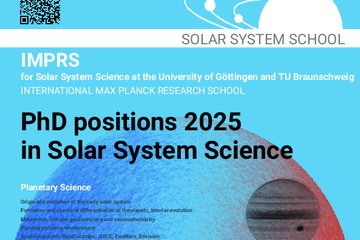All genres
81.
Journal Article
Energetic atomic and molecular ions in Saturn's magnetosphere. Journal Geophysical Research 88, pp. 8905 - 8922 (1983)
82.
Journal Article
Comment on 'On rotational forces in the solar wind' by J. V. Hollweg and P. A. Isenberg. Journal Geophysical Research 88, pp. 7251 - 7252 (1983)
83.
Journal Article
Cosmic ray acceleration in supernova blast waves. Astronomy and Astrophysics 125, pp. 204 - 216 (1983)
84.
Journal Article
On the drift mechanism for energetic charged particles at shocks. Astrophysical Journal 270, pp. 537 - 553 (1983)
85.
Journal Article
Discovering the earth's magnetosphere. Advances in Space Research 2, pp. 11 - 12 (1982)
86.
Journal Article
The structure of cosmic ray shocks. Astronomy and Astrophysics 111, pp. 317 - 325 (1982)
87.
Journal Article
Particle acceleration in modified shocks. Mon. Not. R. Ast. Soc. 198, pp. 833 - 841 (1982)
88.
Journal Article
Low energy hot plasma and particles in Saturn's magnetosphere. Science 215, pp. 571 - 577 (1982)
89.
Journal Article
STARE observations of long discrete echoes. Nature 299, pp. 238 - 240 (1982)
90.
Journal Article
Ion anisotropies in the outer Jovian magnetosphere. Journal Geophysical Research 86, pp. 8285 - 8299 (1981)
91.
Journal Article
Low-energy charged particles in Saturn's magnetosphere: Results form Voyager 1. Science 212, pp. 225 - 231 (1981)
92.
Journal Article
Characteristics of hot plasma in the Jovian magnetosphere: Results from the Voyager spacecraft. Journal Geophysical Research 86, pp. 8227 - 8257 (1981)
93.
Journal Article
Detection of energetic hydrogen molecules in Jupiter's magnetosphere by Voyager 2: Evidence for an ionospheric plasma source. Geophysical Research Letters 7, pp. 813 - 816 (1980)
94.
Journal Article
A weak interaction model for Io and the Jovian magnetosphere. Nature 283, pp. 180 - 183 (1980)
95.
Journal Article
Energetic (∼ 100 keV) tailward-directed ion beam outside the Jovian plasma boundary. Geophysical Research Letters 7, pp. 13 - 16 (1980)
96.
Journal Article
Low-energy charged particle environment at Jupiter: A first look. Science 204, pp. 998 - 1003 (1979)
97.
Journal Article
Hot plasma environment at Jupiter: Voyager 2 results. Science 206, pp. 977 - 984 (1979)
98.
Journal Article
Measurements of plasma flow at the dawn magnetopause by Voyager 1. Journal Geophysical Research 84, pp. 6483 - 6488 (1979)
99.
Journal Article
The acceleration of minor ion species in the solar wind. Astrophys. and Space Phys. 64, pp. 183 - 211 (1979)
100.
Journal Article
Dynamics of low-energy electrons (gt; 17 keV) and ions (gt; 80 keV) in the vicinity of the low-latitude, duskside magnetopause: Helios 1 and 2 observations. Journal Geophysical Research 84, pp. 1453 - 1463 (1979)











